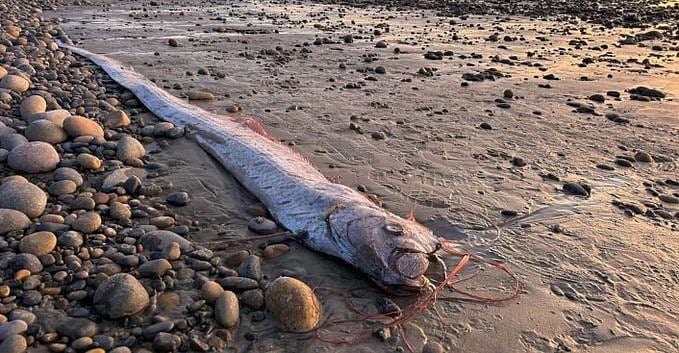The writing was on the wall since the Communists came to power in Nepal in 2018. The Nepal government joined the Belt and Road Initiative of the Chinese government even as India refused to be a part of this sinister Chinese plot to economically subjugate a large number of countries, undertaking projects for them after lending huge sums to them in the name of development. The plan was to drown these countries under heavy debts and then exercise undue influence by obliquely assaulting their sovereignty.
Chinese meddling in Nepalese affairs intensified around that time taking advantage of a friendly communist government next door. It needed no messiah to predict that the new leadership in Nepal would gradually distance Nepal from India even as political and official-level exchanges between Kathmandu and Beijing increased manifold.
After two years in office, the Nepal dispensation under Prime Minister K.P. Sharma Oli bared its fangs more clearly. The new government dropped a bombshell — it sought incorporation of three Indian areas – Lipulekh, Kalapani, and Limpiyadhura — in the map of Nepal and engineered a resolution to be passed by both houses of the legislature that put a unilateral seal of approval on this make-believe change in boundaries.
The days of over-riding Indian influence were over for all practical purposes. The Indian government’s suggestion for talks to discuss the map issue was summarily brushed aside by the Oli government as the legislative process was steamrollered through. Since it was an issue of sovereignty, there were no open dissenting voices in Nepal lest the dissenters be identified as being in cahoots with India. In any case, the wind was blowing away from India towards China.
The Chinese on their part pushed forth their claims on Indian territory in the Galwan Valley and what were seemingly harmless skirmishes worsened into confrontation between the armies of the two countries even as talks took place with dubious Chinese intentions to defuse the situation.
The altered Nepalese map does not mean any actual change of boundaries but it reflected the end of a special Indo-Nepal relationship that has had a few ups and downs but largely a smooth passage for decades. The seeds of discord have been sown in a relationship in which India was derisively referred to as a ‘big brother’ watching over them.
That the Narendra Modi government and the erstwhile Manmohan Singh government both played their role in the souring of the relationship is beyond question. But if one country has had the last laugh it is China which is grinning from ear to ear.
How long the Communist party would rule the roost in Nepal is anybody’s guess but that the Chinese would try everything possible to perpetuate the anti-India mood in the country is well on the cards because Beijing sees a strategic advantage in that. To add to the wind blowing China’s way is the leadership of Xi Jinping that brooks no opposition to his expansionist mindset.
There is of course a country (Maldives) where the Chinese influence held sway while the government there spurned India comprehensively but a complete turnaround took place as elections catapulted Maldives to a pro-India, anti-China stance. It is too early to predict that the Maldives pattern would be repeated in Nepal.
For now, relations between Nepal and India are strained as never before. It would be foolhardy to think that India would serve the Nepal-coveted areas to Nepal on a platter. Instead, there would be bad blood along the way and the sufferers would be the hitherto-happy relationship between the two neighbours that have had long-abiding cultural, ethnic and economic links.
The Chinese and the Pakistanis would be ever at hand to continue to nurture discord against India at least so long as the general mood reflects that trend.
Land-locked Nepal borders India to the east, west, and south. Utilising this geographical advantage, India has imposed three trade blockades — in 1975, 1989, and 2015 against Nepal to assert its superiority. It was after the last of these blockades in 2015 just after a devastating earthquake in Nepal that Nepal and China signed a historic trade and transit agreement that became a trail-blazer for a new relationship between the two countries.While India later denied the 2015 blockade, it is widely known that the Madhesis, who owe their origin to India, were in the forefront of a movement against the Nepalese establishment, with tacit Indian support, which crippled the economy in Nepal and brought untold misery on the people.
That resentment against the blockade ultimately resulted in the coming to power of the communists in Nepal which struck at the roots of Indo-Nepalese relations and gave an opportunity to China to spread its influence in that country.
A potent bone of contention against India in Nepal are the Gandaki, Koshi and Mahakali water agreements which are looked upon by Nepalese as being unfair to the locals. In the vitiated atmosphere that prevails today, these are bound to evoke greater anti-India feeling in days to come.
The 1950 Peace and Friendship Treaty which is at the base of the present Indo-Nepal relationship is looked upon with deep suspicion in Nepal. Local voices have been raised against it from time to time. In his official state visit to India in September 2008, then Prime Minister of Nepal Pushpa Kamal Dahal had raised the issue with his Indian counterpart, Manmohan Singh. Yet, there is still no headway towards it a decade down the line.
Another valid reason for the growing anti-Indian sentiment among the Nepalese is a strong belief in Nepal that India wants to capture Nepal’s natural resources, including water resources. From the days of the Koshi and Gandak Agreements, this feeling remains etched in the Nepalese conscience.
All in all, Indo-Nepalese relations are in jeopardy. Whatever be the merits of the relative stands of India and Nepal, there is need for a greater spirit of accommodation. While the Nepalese psyche is linked closely with India, this country too can ill afford to have another hostile neighbour at its doorstep besides Pakistan and China.
The writer is a political commentator and columnist. He has authored four books.










